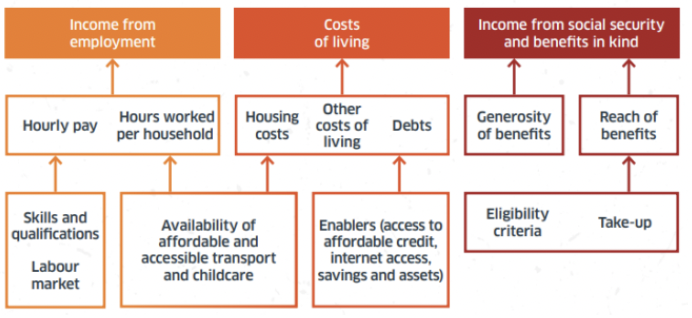Tackling child poverty - progress report 2023-2024: annex A - measurement framework
Child poverty measurement framework with the latest data on the drivers of child poverty. The indicators in the child poverty measurement framework are intended to monitor these drivers of poverty.
Introduction
The drivers of poverty are summarised in the diagram below. These are: income from employment, costs of living and income from social security and benefits in-kind.

The indicators in the child poverty measurement framework are intended to monitor the drivers of poverty. They form part of a wider monitoring and evaluation strategy.
This annex sets out the trends over time for each of the child poverty measurement framework indicators. Due to the impact of the COVID-19 restrictions on the data collection of many national surveys, some indicators show a data gap for all or some of the years 2020-2022. Where the data is available and can be trusted to be reliable and robust, new data and trends have been added.
A summary assessment of what the indicators mean is included in the main progress report.
Contact
Email: TCPU@gov.scot
There is a problem
Thanks for your feedback